Perth Suburban train have been serving
the Perth Metropolitan decades. And it has been transformed, from a group
of steam-powered local trains, into a fleet of electric trains, connecting
the housing suburbs around Perth to Central Business District area.
It plays a significant role in turning
the Western Australia's economy too.
And when I lived in Perth, I used to treat
them like my own private vehicle, as I go from my house to my college by train.
I also went to anywhere place around Perth by these trains, because back then,
I regard travelling by suburban train is the most reliable way to travel around,
as the bus don't go to anywhere at anytime.
Unfortunately, I had also seen ugly passenger
behaviour onboard the trains, ranging from drunken people to cowardish polices.
And I had also been fined twice, both of them under unfair circumstances.
Nevertheless, the trains are still and
will remain as the strategic mean of transporting commuters from their houses
to their working place in Perth.
Just for addition, most of the photos are
those of Currambine station, as it located on the back of my house. And the
other photos were left in Australia, to prevent excess baggage when I about
to returned back home to Indonesia.
|
|
Currambine station, during its heyday
in 2000. This station was the Northernmost suburban station in Perth,
and it was built in early 1990s to serve Perth's northernmost suburbs.
At this time, there was a talk of extending
the railway line to Clarkson.
And nowaday, the project had nearly
finished, and this station is about to be demolished, to be replaced with
the new station, a few metres to the East of this station.
|
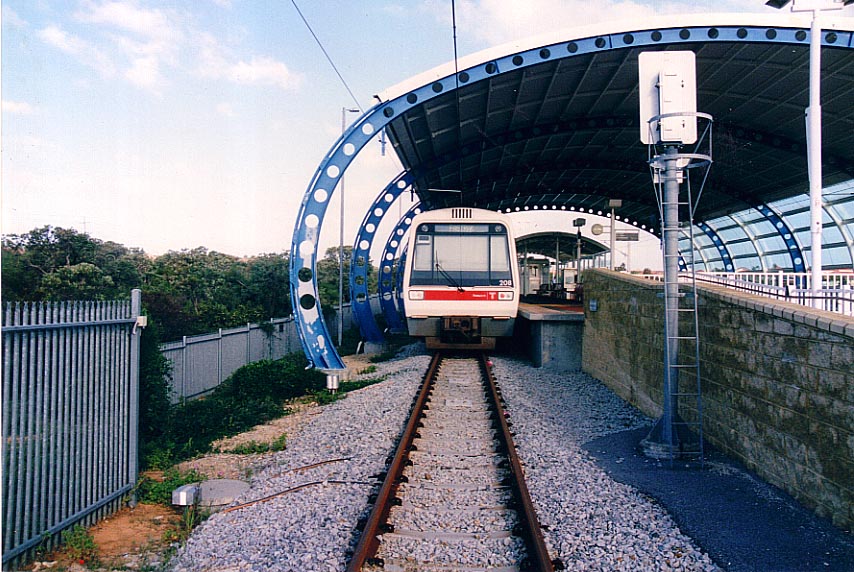 |
Another view of Currambine station,
complete with one suburban train on its platform.
The bush on the left of the picture
has been ravaged, to build the new Currambine station.
|
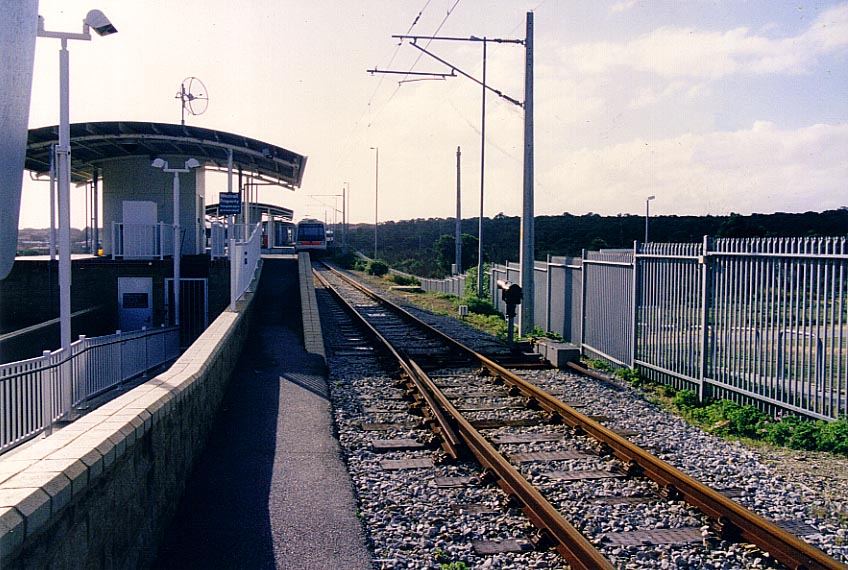 |
A view of Perth suburban shed. This
place is used to park the excess suburban train at night or during the
public hollidays.
The area on the righ of the photo has
been completely changed: a new railway embankment has been built on it,
and some part of the hill in the background has been dug for the railway
line.
The reason behind the building of completely
new line, instead of utilizing the current premises is that the land originally
designated for the new railway line have been occupied by housing complex.
|
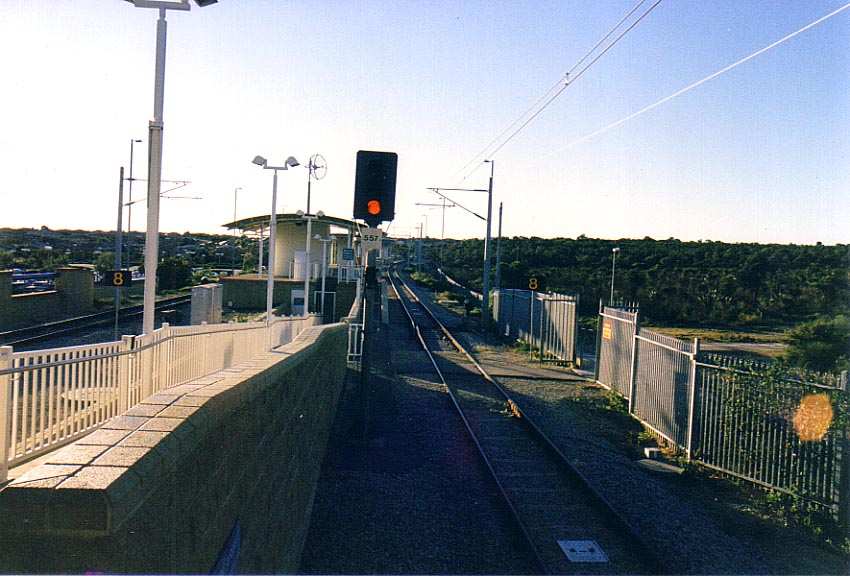 |
Wider angle view of the above picture,
shows a different perspective of the Northern side of Currambine Station,
prior to the building of the extension to Clarkson in 2002.
This photo was shot in winter 2000.
And when I took this photo, I didn't know if there was a plan to realign
the line. So at first, I thought this photo would just be an unintersting
photoshot.
But nowaday the view have been changed
completely, especially on the right of the picture.
|
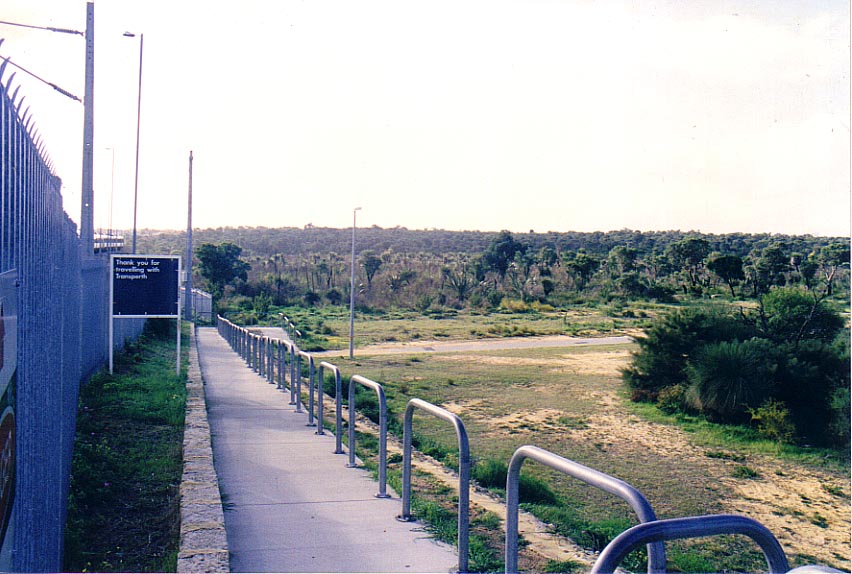 |
The area to the east of old Currambine
was once an empty bushland, with a small footpath which connect the station
with a nearby suburb (I don't remember the suburb's name).
This is how the area used to looked
like, before being ravaged, to make way to the new railway line to Clarkson.
|
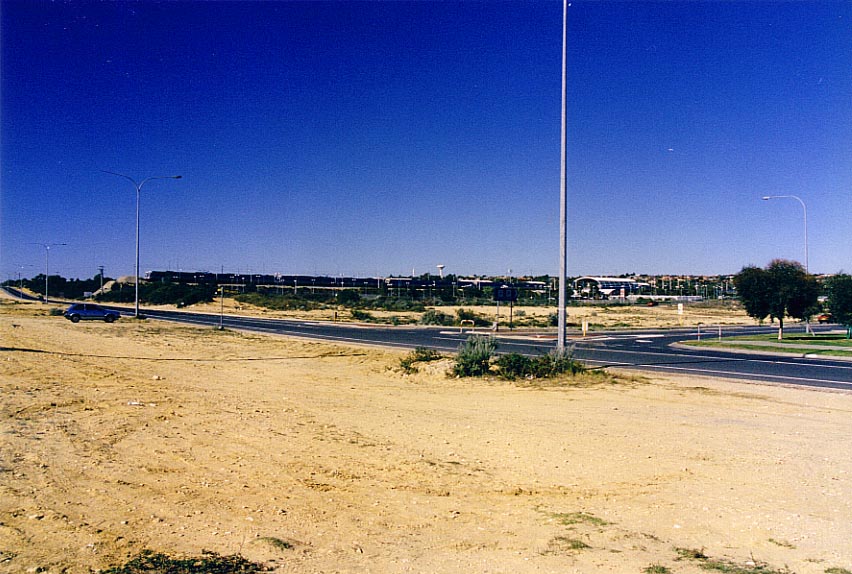 |
A further view of Currambine station
during one Sunday in 2000, with Burns beach road in foreground. You can
spot if it was Sunday or public holliday because the extension line were
packed by trains.
Note the absence of the new railway
bridge above the Burns beach road.
|
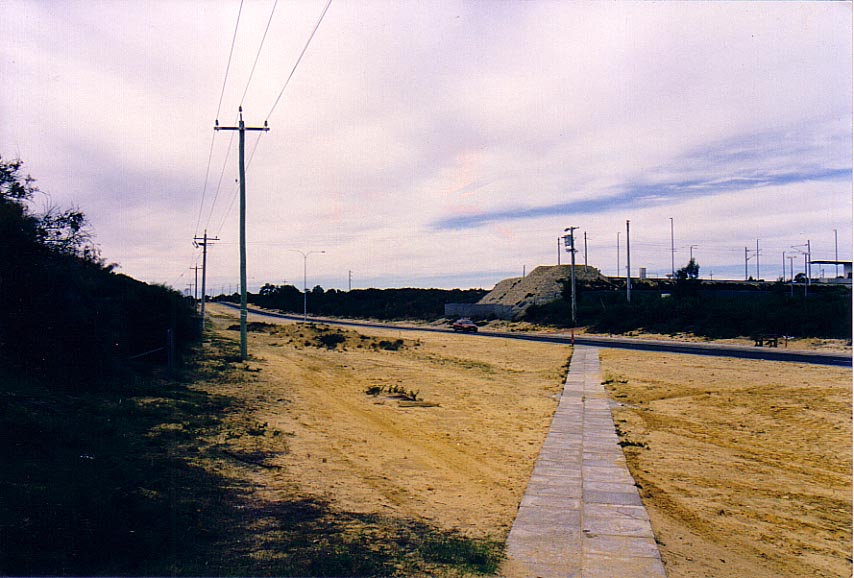 |
A closer view of the above picture.
There used to be no railway bridge
above Burns Beach Road. But now there is one. And is located beside (behind,
from this point of view) the buffer stop in this picture.
This photo was taken in Summer 2000.
Note the thick cloud which was caused by severe heat.
|
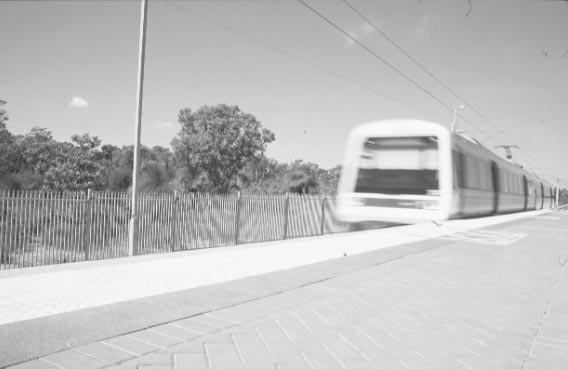 |
A black and white photo of an approaching
suburban train in Curambine station.
This photo provide a good look of how
was the bush beside Currambine station used to look like before it was
cleared.
|
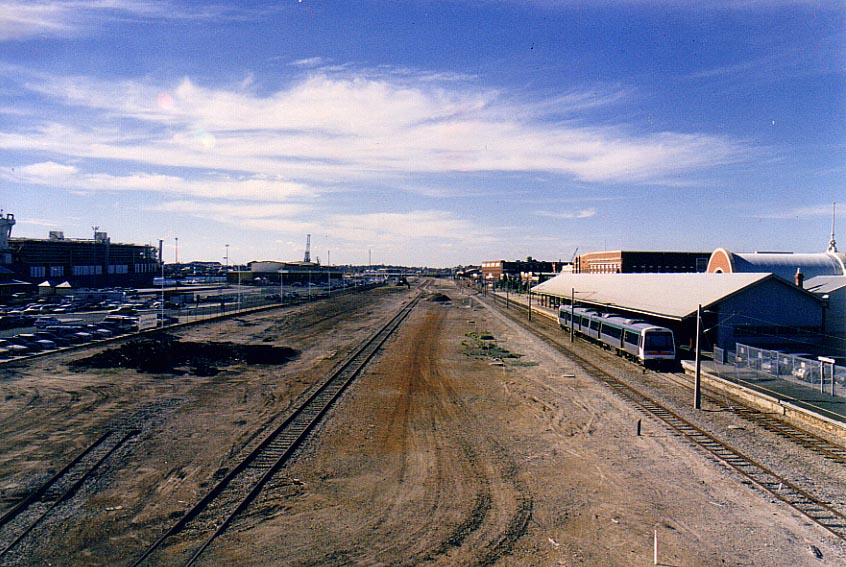 |
The birds-eye view of Fremantle station,
which was taken from a pedestrian bridge. Two
railway lines on the right of the picture are narrow gauge lines. Whereas
the rest (including a discontinued line on the left) are standard gauges.
There used to be more rails in the
yard, and once there was an island platform to the left of the narrow
gauge lines. But those has since been disappeared, due to declining traffic
in 1990s, and the standard gauge line was realigned closer to the station
building, and this pedestrian bridge has since been demolished.
|